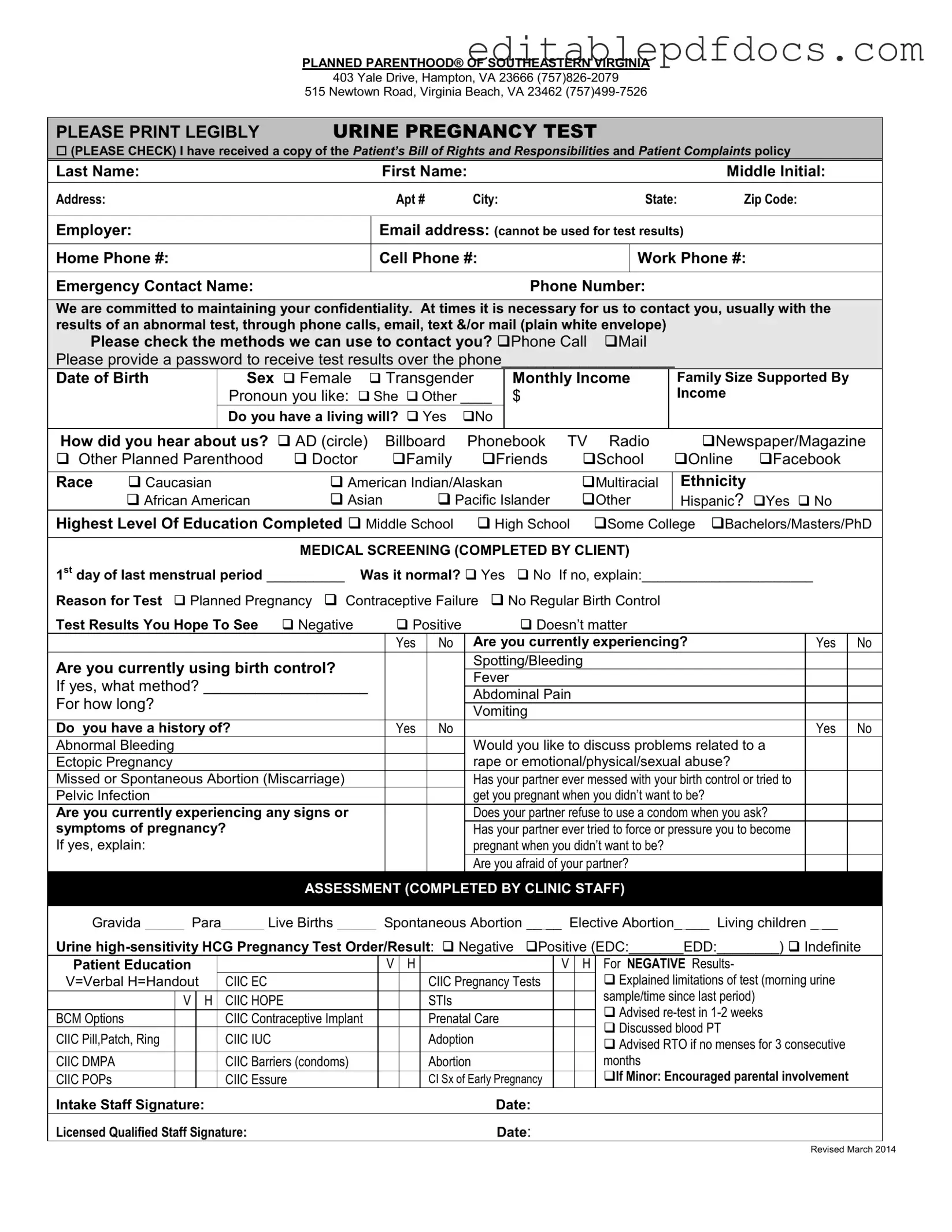Filling out the Planned Parenthood Proof form can be a straightforward process, but many individuals make common mistakes that can lead to delays or complications in receiving care. One frequent error is failing to print legibly. When handwriting is difficult to read, it can cause misunderstandings or miscommunication regarding essential information, such as contact details or medical history.
Another common mistake is neglecting to provide complete information. Leaving sections blank, especially those related to medical history or contact methods, can hinder the clinic's ability to provide the necessary care. Every detail matters, and incomplete forms can lead to additional follow-up calls or even missed appointments.
Many individuals also overlook the importance of selecting preferred contact methods. By not checking the appropriate boxes for how they wish to be contacted, patients may miss vital communications regarding test results or appointments. This oversight can create unnecessary anxiety and confusion.
Furthermore, some people forget to provide a password for receiving test results over the phone. This password is crucial for ensuring privacy and security. Without it, patients may find themselves unable to receive timely information about their health status.
Another mistake involves inaccuracies in personal information, such as the date of birth or contact numbers. Errors in these areas can lead to significant delays in care or even misidentification. It is essential to double-check all entries for accuracy before submission.
Individuals may also fail to indicate their current use of birth control or any symptoms they are experiencing. This information is vital for the clinic staff to provide appropriate care and advice. Omitting these details can result in a lack of necessary support or guidance.
Some patients do not take the time to explain abnormal menstrual cycles or other medical concerns. Failing to provide context can lead to misunderstandings about the reasons for the test and the urgency of the situation.
Another common oversight is not disclosing a history of sexual health issues or previous pregnancies. This information can significantly impact the assessment and care provided. Being open about one's medical history is crucial for effective treatment.
Lastly, some individuals may rush through the form without reading the consent and privacy information thoroughly. Understanding one's rights and the implications of the information provided is essential. Patients should take the time to ensure they are comfortable with the terms before signing.
By avoiding these common mistakes, individuals can help ensure a smoother experience when accessing care at Planned Parenthood. Taking the time to fill out the form accurately and completely not only benefits the patient but also enhances the clinic's ability to provide timely and effective services.
